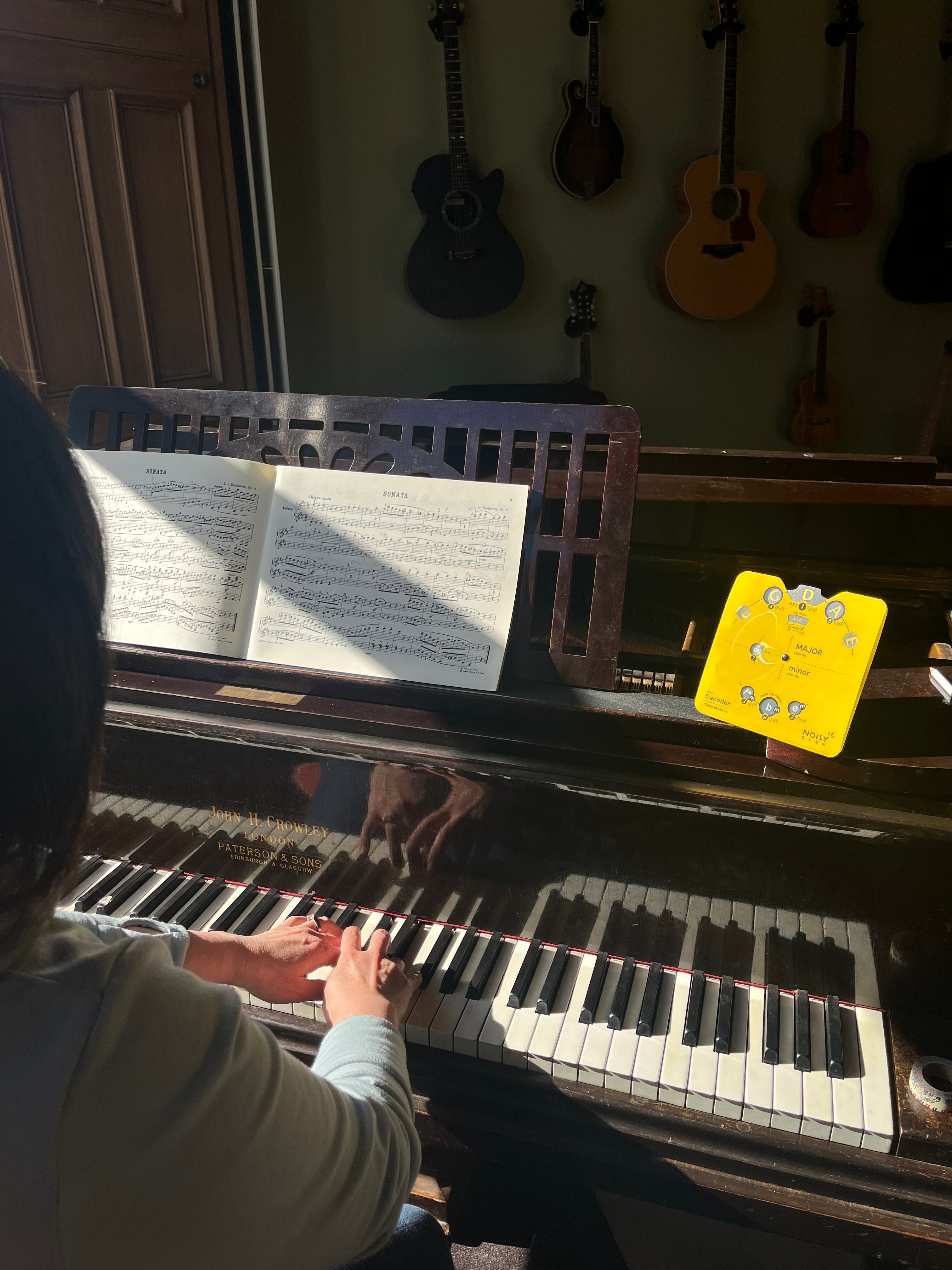We are going to build up to talking chords. A triad, the most basic chord, is formed from three notes typically taken from the key that the chord is being played in. So we are going to introduce notes in the scale and intervals before we build our first chord. Bear with us, we believe that knowing how to build a chord will massively help your playing.
Free chord chart at the bottom!
Notes in the Key of C
The key of C major has only seven notes, shown below.

These are all the natural notes (C,D, E, F, G, A, B), which are the white keys on your piano. Each note has a corresponding chord, so there are 7 chords in the key of C.
Intervals
Each of the seven notes in the scale can also be identified by the distance the note is from the root note of C. This distance between notes is called an interval. The interval between notes defines the characteristic sound of a chord.

Here are two very important distinctions that if you learn now, will make your musical life much easier.
- Intervals are calculated based only on the notes in the scale.
- The number/name of an interval is the number of notes it encompasses.
- Including the starting and finishing notes in the interval count. To find an interval; count your starting note, the end note and the notes in-between.
In the G scale below, the interval between the G and the D is a 5th. This is shown as an orange line. Starting the count at the G and including the D gives us 5 (G,A,B,C and D) which is otherwise called a Fifth.

The distance between the D and G, shown below, is a 4th, as we typically measure ascending intervals. Starting the count at D and including the G gives us 4 (D, E, F# and G) or a Fourth.

Chords are simply stacked notes with specific intervals between them. Our goal is to help you become familiar with how to build chords and how the interval used impacts the sound and flavour of the chord.
Building a Chord
A triad, the most basic chord, is formed from three notes.
There is an interval of a third between each note in a chord.
The Major Chord
This arrangement of notes is sometimes called stacked thirds.When these notes are played in unison, we hear a chord. The G major chord is built from the root G note, with the third, B, and the 5th, D. These are highlighted below.

On our Cheat Sheets diagrams we show the note locations on the keyboard. The chord root is shown with the large black dot and the 3rd and 5th intervals by the 3 and 5 in the white circle. Where possible we call out the note names above the keyboard.
When you know how the major chord is constructed it is very easy to understand how to play many other chords without having to know a shape or chord fingering. Our Chord Formula helps here. A portion of the chord formula is shown below.

The Major chord is shown as the 1, 3 and 5 intervals that we displayed earlier. The Minor chord is a variation from this simple formula, revealed in the line below. The only change is in the third. The third is altered by lowering/flattening the note by a semitone or half step.
The Minor Chord
G Major is the starting chord to create a G Minor.

G Minor is played by changing the third of the chord. The B from the Major is flattened to become Bb. We denote the flattened notes with the fingering and note in blue.

The Diminished Chord
Another chord type shown in the chord formula is the diminished chord.

Hopefully you will be able to see that the diminished chord is played by lowering the 3rd and the 5th by a semitone.
Intervals seem complicated when you first start to learn them however they are very useful in exposing the hidden secrets behind chords. The chord formula simplifies creating multiple chords from the basic major chord formula of 1,3 and 5. Go play your favourite major chord and lower the third by a semitone or half step to create the minor.
Use this FREE digital download to follow along in what we've been talking about!





